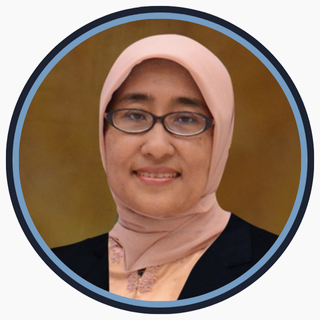AN EPIDEMIOLOGICAL OVERVIEW OF DENGUE HEMORRHAGIC FEVER (DHF) CASES IN KEDIRI REGENCY DURING 2017-2021
Gambaran Epidemiologi Kasus Demam Berdarah Dengue (DBD) di Kabupaten Kediri Tahun 2017-2021

Downloads
Background: Dengue Hemorrhagic Fever (DHF) is a communicable disease with rapid spread and the potential to cause death. In 2019, Kediri District had the fourth-highest number of DHF cases in East Java Province and was reported to have experienced a DHF outbreak. Objective: This study aimed to describe dengue cases in Kediri District in 2017-2021 under non-pandemic and COVID-19 pandemic conditions. Methods: Using a total sampling technique, descriptive research with a case series design was conducted using secondary data from the Health Profiles and the Central Bureau of Statistics of Kediri District in 2017-2021. The studied variables included the number of dengue cases, sex, age, area, population, population density, morbidity rate, Lateral Flow Immunoassay (LFI), and rainfall. Data were analyzed using an epidemiological approach based on people, places, and times and visualized with tables and diagrams. Results: The majority of DHF cases occurred in males and the 5-14 years age group in both the COVID-19 non-pandemic (52.88%; 55.96%) and COVID-19 pandemic conditions (51.14%; 58.56%). The incidence rate (IR) increased with population density and the number of dengue cases in the non-COVID-19 pandemic. It decreased with a decrease in dengue cases when the population density increased during the COVID-19 pandemic. Under all conditions, high dengue cases were found in months with high rainfall. Conclusion: The pattern of DHF incidence in Kediri District in 2017-2021 is mostly in males and the age group of 5-14 years, when there is an increase in population density, and in January.
Dayani DP. The overview of dengue hemorrhagic fever in East Java during 2015-2017. J Berk Epidemiol [Internet]. 2020 Jan;8(1):35–41. Available from: https://e-journal.unair.ac.id/JBE/article/view/12370
Kularatne SA, Dalugama C. Dengue infection: Global importance, immunopathology and management. Clin Med (Northfield Il). 2022;22(1):9.
Tsheten T, Clements ACA, Gray DJ, Adhikary RK, Furuya-Kanamori L, Wangdi K. Clinical predictors of severe dengue: a systematic review and meta-analysis. Infect Dis poverty. 2021;10(1):1–10.
Satoto TBT, Pascawati NA, Wibawa T, Frutos R, Maguin S, Mulyawan IK, et al. Entomological Index and home environment contribution to dengue hemorrhagic fever in Mataram City, Indonesia. Kesmas J Kesehat Masy Nas (National Public Heal Journal). 2020;15(1):32–9.
Ryan SJ, Carlson CJ, Mordecai EA, Johnson LR. Global expansion and redistribution of Aedes-borne virus transmission risk with climate change. PLoS Negl Trop Dis. 2019;13(3):e0007213.
Yudhastuti R, Lusno MFD. Gambaran kasus demam berdarah dengue (DBD) di pulau Bali tahun 2012-2017. J Kesehat Lingkung Indones. 2020;19(1):27–34.
Ngadino N, Marlik M, Nurmayanti D. Resistensi nyamuk Aedes aegypti terhadap Cypermethrin di wilayah kabupaten Kediri. Surabaya: Poltekkes Kemenkes Surabaya; 2021.
Kediri District Health Office. Profil kesehatan Kabupaten Kediri 2019. 2019.
Paomey VC, Nelwan JE, Kaunang WPJ. Sebaran penyakit demam berdarah dengue berdasarkan ketinggian dan kepadatan penduduk di Kecamatan Malalayang Kota Manado tahun 2019. J Kesmas. 2019;8(6):521–7.
Salim MF, Syairaji M. Time-series analysis of climate change effect on increasing of dengue hemorrhagic fever (DHF) case with geographic information system approach in Yogyakarta, Indonesia. Int Proc 2nd ISMoHIM 2020. 2020;
International Conference on Public Health. The role of Epidemiology [Internet]. 2019. Available from: http://theicph.com/en_US/icph/peran-epidemiologi/
Tomia S, Hadi UK, Soviana S, Retnani EB. Epidemiology of dengue hemorrhagic fever cases in Ternate City, North Moluccas. J Vet. 2020;21(4):637–45.
Kasman K, Ishak NI. Analisis penyebaran penyakit demam berdarah dengue di Kota Banjarmasin tahun 2012-2016. Media Publ Promosi Kesehat Indones. 2018;1(2):32–9.
Kesetyaningsih T. Distribution of dengue hemorrhagic fever (DHF) in regards to age and sex in Sleman, Yogyakarta, Indonesia. In: Third International Conference on Sustainable Innovation 2019–Health Science and Nursing (IcoSIHSN 2019). Atlantis Press; 2019. p. 11–5.
Tosepu R, Effendy DS. Dengue hemorrhagic fever cases by gender in the North Buton Regency in the 2018-2020 period. KnE Life Sci. 2022;148–53.
Suryani ET. Profile of dengue high fever in Blitar City at 2015-2017. J Berk Epidemiol [Internet]. 2018;6(3):260–7. Available from: https://e-journal.unair.ac.id/JBE/article/view/9967
Marbun HC. Hubungan faktor penjamu dan lingkungan dengan kejadian demam berdarah dengue pada anak di Kabupaten Serdang Bedagai. Universitas Sumatera Utara; 2021.
Arisanti M, Nurmaliani R, Sitorus H, Ambarita LP. Karakteristik penderita, hari dan curah hujan terhadap kejadian Demam Berdarah di Kabupaten Ogan Komering Ulu. J Heal Epidemiol Commun Dis. 2019;5(1):23–9.
Chandra E, Hamid E. Pengaruh faktor iklim, kepadatan penduduk dan angka bebas jentik (ABJ) terhadap kejadian demam berdarah dengue (DBD) di Kota Jambi. J Pembang Berkelanjutan. 2019;2(1):1–15.
Delita K, Damiri N, Sitorus RJ, Hariani PL. Correlation of population density, houseold density and larvae-free index with dengue hemorrhagic fever incidence rate. Azerbaijan Med J [Internet]. 2023;62(10):5913–21. Available from: https://www.azerbaijanmedicaljournal.net/volume/AMJ/62/10/correlation-of-population-density-houseold-density-and-larvae-free-index-with-dengue-hemorrhagic-fever-incidence-rate-63a135012b565.pdf
Yek C, Nam VS, Leang R, Parker DM, Heng S, Souv K, et al. The pandemic experience in Southeast Asia: Interface between SARS-CoV-2, malaria, and dengue. Front Trop Dis. 2021;2:788590.
Surendran SN, Nagulan R, Sivabalakrishnan K, Arthiyan S, Tharsan A, Jayadas TTP, et al. Reduced dengue incidence during the COVID-19 movement restrictions in Sri Lanka from March 2020 to April 2021. BMC Public Health. 2022;22(1):388.
Lorenz C, Bocewicz ACD, de Azevedo Marques CC, Santana LMR, Chiaravalloti-Neto F, Gomes AHA, et al. Have measures against COVID-19 helped to reduce dengue cases in Brazil? Travel Med Infect Dis. 2020;37:101827.
Nisaa A. Korelasi antara faktor curah hujan dengan kejadian DBD tahun 2010-2014 di Kabupaten Karanganyar. J Ilmu Kesehat Masy. 2018;14(1):25–33.
Nuranisa R, Budi Maryanto Y, Atoillah Isfandiari M. Correlation of free larvae index and population density with dengue fever incidence rate. 2022;
Ruhardi A. Gambaran faktor risiko lingkungan dan kejadian penyakit demam berdarah dengue (DBD) di Kabupaten Lombok Timur. Indones J Heal Med. 2021;1(2):339–47.
Maryanti E, Ismawati I, Prissilia U, Puteri AY. Potensi transmisi demam berdarah dengue berdasarkan indeks entomologi dan maya indeks di tiga kelurahan Kecamatan Sukajadi Kota Pekanbaru. J Kesehat Lingkung Indones. 2020;19(2):111–8.
Kediri Regency Central Statistics Agency. Kediri Regency in figures 2020. 2020.
Pascawati NA, Sahid S, Sukismanto S, Yuningrum H. Faktor yang berhubungan dengan pola pengelompokkan kasus Demam Berdarah Dengue (DBD) di Temanggung, Jawa Tengah. Balaba j litbang pengendali penyakit bersumber binatang banjarnegara. 2022;65–78.
- Every manuscript submitted to must observe the policy and terms set by the Jurnal Berkala Epidemiologi
- Publication rights to manuscript content published by the Jurnal Berkala Epidemiologi is owned by the journal with the consent and approval of the author(s) concerned. (download copyright agreement)
- Complete texts of electronically published manuscripts can be accessed free of charge if used for educational and research purposes according to copyright regulations.

JBE by Universitas Airlangga is licensed under a Creative Commons Attribution-ShareAlike 4.0 International License.























